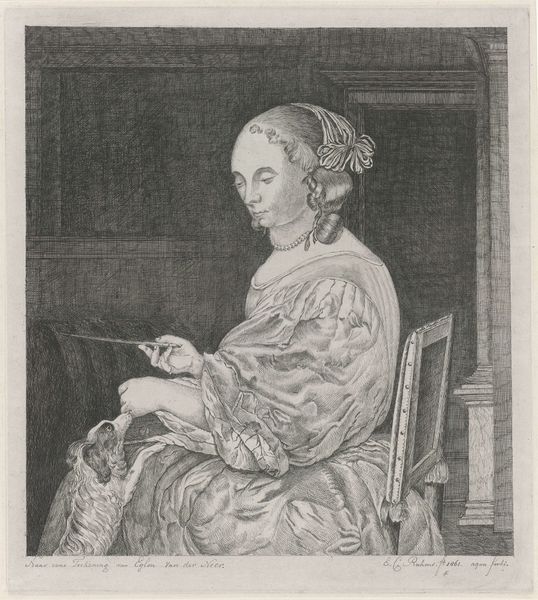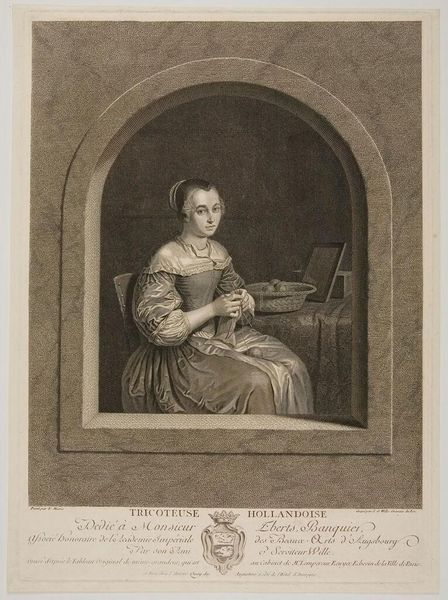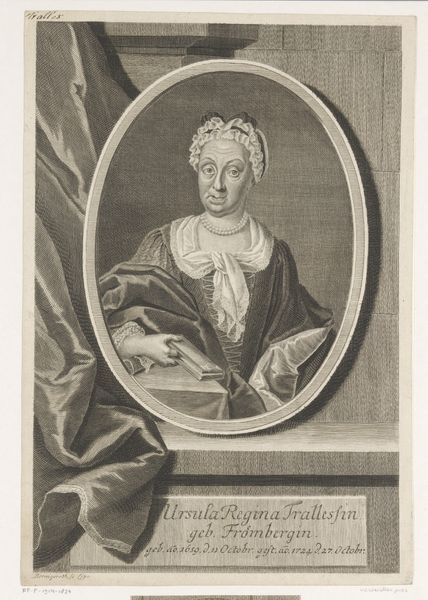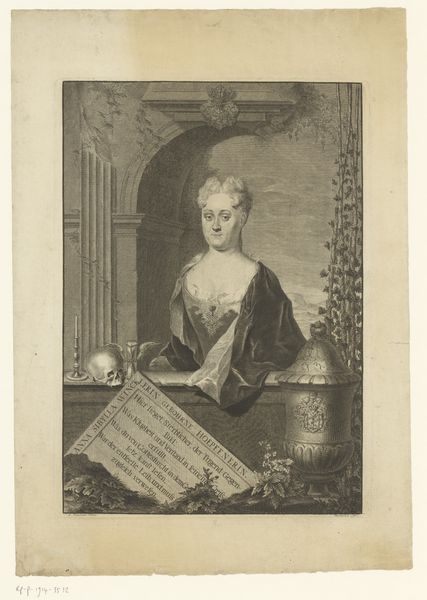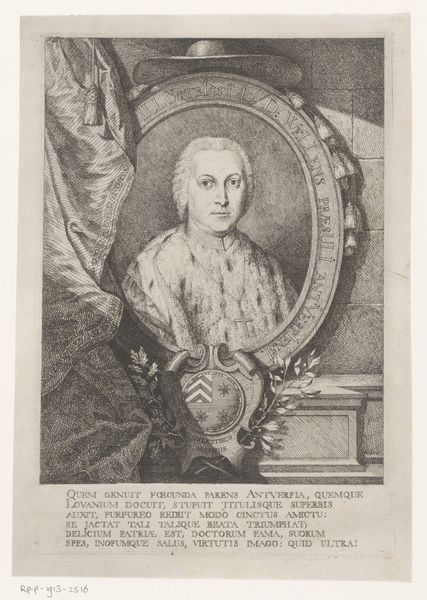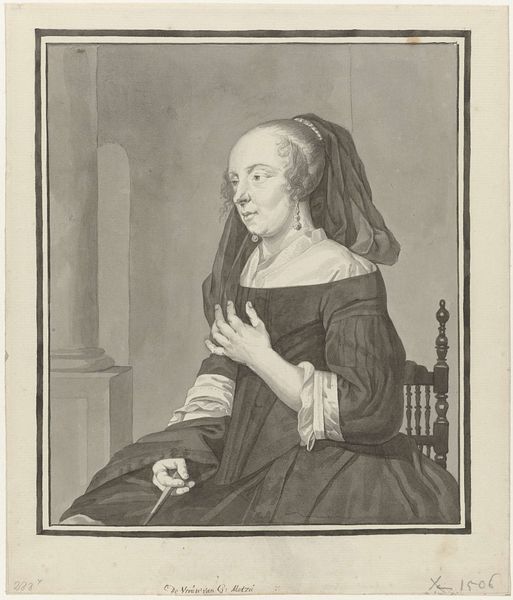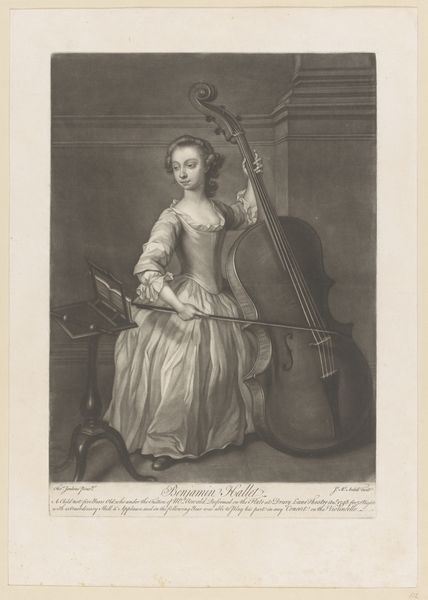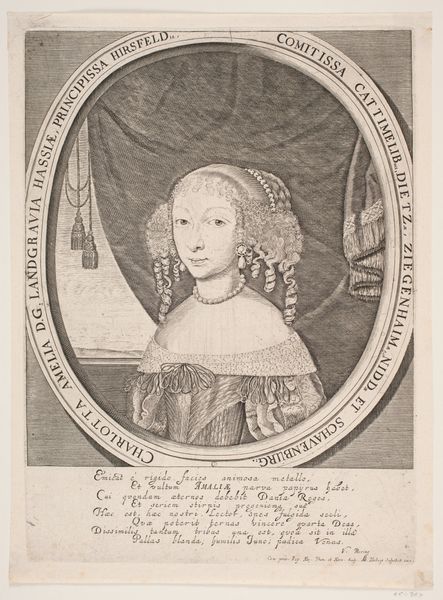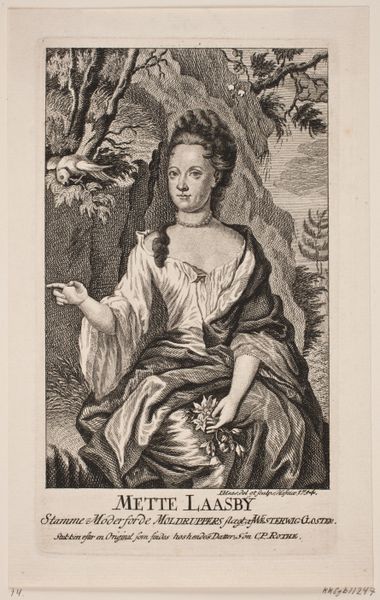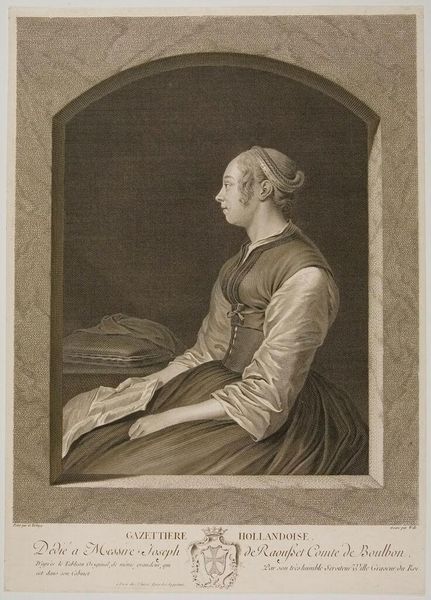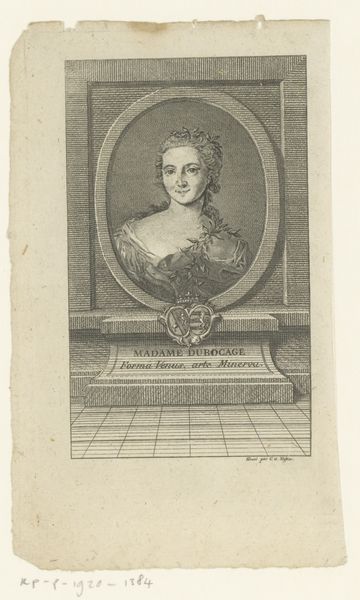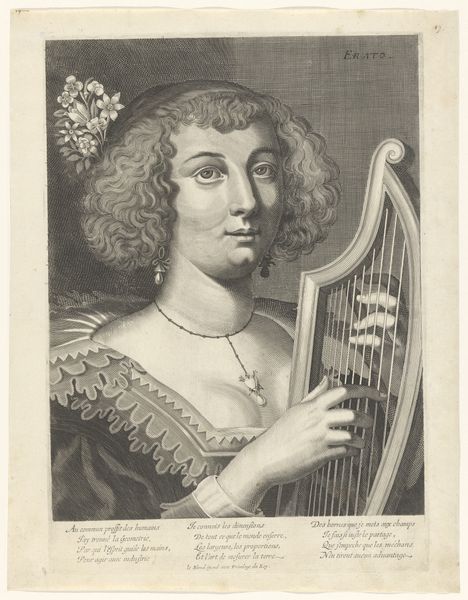
print, intaglio, engraving
#
portrait
#
baroque
# print
#
intaglio
#
genre-painting
#
engraving
Dimensions: height 317 mm, width 268 mm
Copyright: Rijks Museum: Open Domain
Curator: This intaglio print, likely an engraving, depicts a young woman playing the clavichord. Created circa 1720 to 1730, it's attributed to Cornelis-Henricus van Meurs. The baroque style, common during that period, offers us insight into the social roles of women, portraying leisure and musical talent. Editor: It’s striking how detailed this print is for such a delicate process. The textures in the woman’s velvet dress and the draped textile behind her suggest opulence, but something about her expression gives the scene an undercurrent of melancholy. The making process surely played a role in how finely these textures read. Curator: Precisely. Consider the print as a cultural commodity. Owning such an image signaled status. Notice the care put into detailing the clavichord itself. It points to a growing market for musical instruments among the rising merchant class. Editor: It does raise questions about accessibility. Prints made art more democratic in a sense, but who was really buying these? Also, consider the labour of the engraver translating Gerard Dou's initial painted vision, which is named on the left margin. Curator: Exactly. Prints circulated ideas and tastes. A genre scene like this also played a role in shaping perceptions, ideals about women's roles within the domestic sphere. This scene suggests musical performance as an essential attribute for women of the era. Editor: And the inscription is intriguing – "To chase away sorrow and melancholy... one plays the harpsichord, without grievance and without worries of destiny." A slogan, promising some relief via the material and the work that this girl is performing! It hints at an intimate space where class status is being quietly made visible. Curator: It does underline how artworks were instrumental in shaping contemporary desires and ambitions, and even suggesting ways to find emotional respite, so crucial during periods of political and economic change. Editor: Reflecting on van Meurs' print, it is striking how the interplay of production, display, and inscription makes these historical impressions echo across the centuries. The labor of music! Curator: Indeed. Understanding art within its cultural moment and its journey afterwards enables it to spark conversations about so much more than just what we initially perceive.
Comments
No comments
Be the first to comment and join the conversation on the ultimate creative platform.
